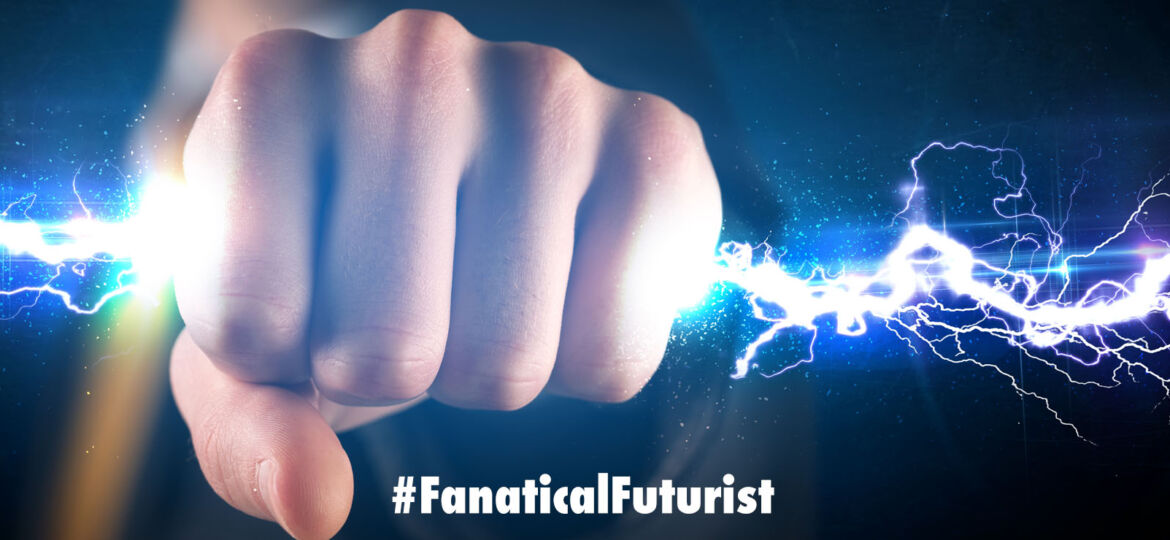
WHY THIS MATTERS IN BRIEF
One day nanobots and other types of electrical and robotic devices might be embedded into humans, so scientists are looking for new ways to power them.
 Interested in the Exponential Future? Connect, download a free E-Book, watch a keynote, or browse my blog.
Interested in the Exponential Future? Connect, download a free E-Book, watch a keynote, or browse my blog.
Everything we build in the future, from the cancer killing nanobots in our bodies to the technology that’s supposed to be implanted into us, will need power which is why scientists around the world are trying to develop new nano-sized electricity generators, nanogenerators like these ones that generate electricity from the movement of the blood in our veins that I discussed recently.
In a new development though researchers in Japan say that one day humans may be able to produce our own electrical energy in the same way electric eels do – a trick that we copied recently to create a breakthrough aqueous bio-battery that could one day power smart contact lenses. And according to the team their new research, which they hope to one day implant into humans, “began with understanding precisely how tiny motors inside bacteria maintain biological balance.”
The researchers specifically focused on a bacterial rotational motor dubbed V1 that functions as part of a pump that moves sodium ions across the membrane as a part of healthy cellular processes, and they published their results in Journal of Biological Chemistry.
“Energy conversion efficiency of rotary molecular motor is much higher than that of human-made motors,” said Ryota Iino, paper author and researcher with the Institute for Molecular Science. “And energy conversion by rotary molecular motor is reversible. If we completely understand the mechanism, it will lead to the realization of highly efficient, human-made motors in the future.”
In order to understand the mechanism, the researchers used a gold nanoparticle probe to directly observe a single molecules purified from bacteria- Enterococcus hirae, which can cause sepsis in humans. By imaging a single molecule at such a high resolution, the researchers could observe its behavior over time and determine how the motor rotated for different sections to interact with various inputs. Much like a well pump that a person must crank to get the water to flow upward, against gravity, the observed molecular pump must take some input of energy to generate more energy to transport ions against the gradient of the bacterial membrane. The energy the human puts into the hand pump is limited, but the interaction is heavy, compared to the amount of energy it takes for the water to flow upwards.
“We started out by working to understand how chemical energy is converted to the mechanical rotation of the V1 motor,” Iino said. “We found that while the three-dimensional structures of V1 and related rotary motors are similar, their chemical and mechanical coupling mechanisms are very different, suggesting that cellular functions dictated the evolution of different functional mechanisms.”
With this study, the researchers have a better understanding of how the V1 motor forms a complex with another rotary motor called Vo to actively pump sodium ions across the cellular membrane. In other words, the motor complex uses chemical energy from the cell to mechanically rotate and convert the energy into electrochemical potential – much like a human uses energy gained from food to muscle a well pump, resulting in the generated energy of the water flow.
“Next, we would like to understand exactly how the energy conversion mechanism of the motor complex works,” Iino said.
According to Iino, electric eels generate electric energy from chemical energy with a mechanism similar to the motor complex in this study.
“If we can fully understand this mechanism, it may be possible to develop a battery capable of energy conversion that we can implant into an artificial electric eel or even into a human,” Iino said.















